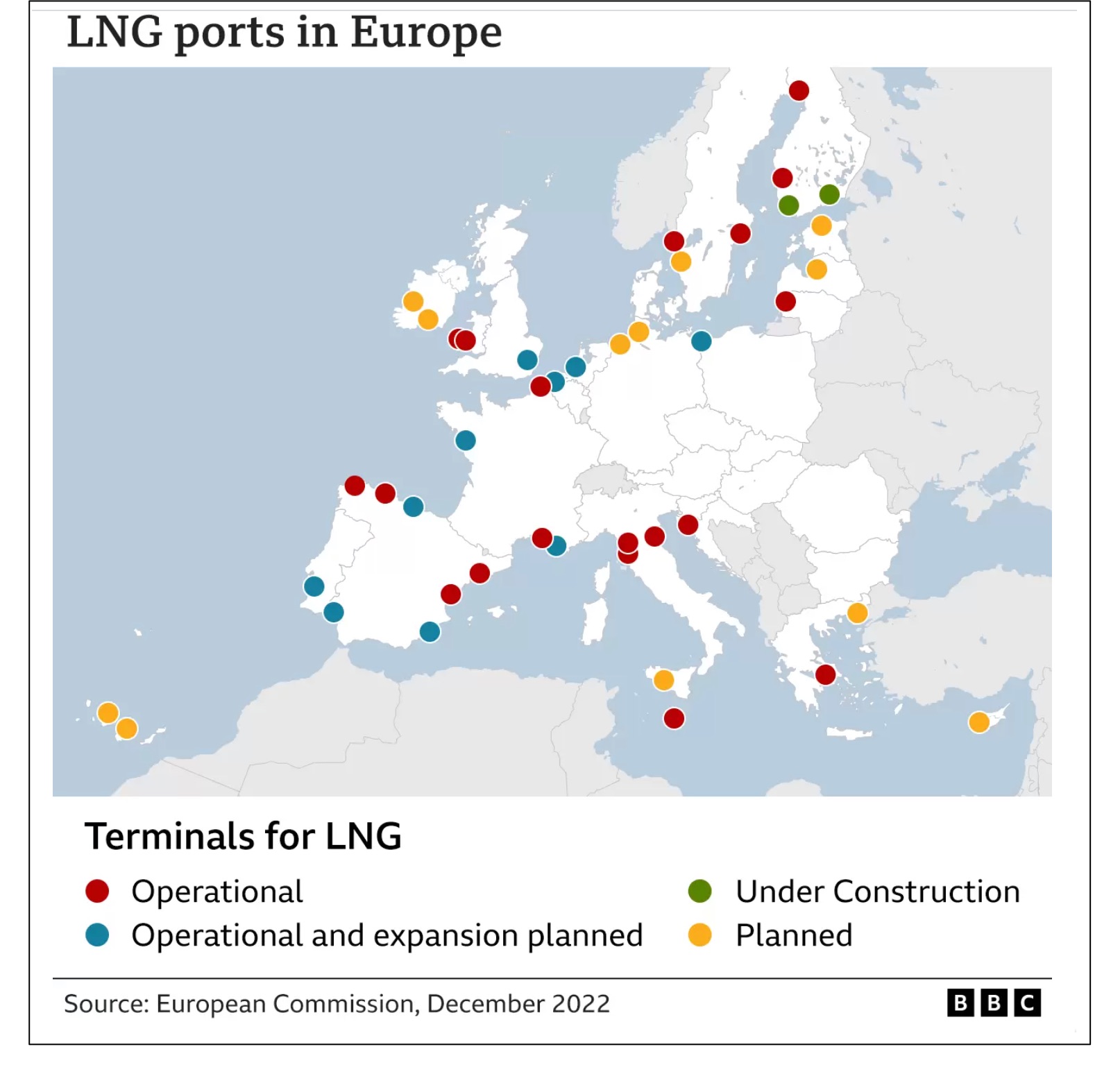Our story starts with three pipelines and ends with floating LNG terminals.
Because the Europeans wanted to diminish their reliance on the Middle East, they looked to Russia. So, during the 1980s, the Siberian Natural Gas Pipeline began sending energy to Europe and then, in 2011, Nord Stream 1 was completed. However, its sister, Nord Stream 2 was never activated. Still though, in 2017, Russia was Europe’s leading supplier of gas.
You can see below that all has changed. I’ve copied a BBC animation that illustrates where Europe’s gas is coming from. Representing Russia, the red line moved from the top to the bottom since 2017:

Meanwhile, the U.S. has developed a supply chain that links its LNG (liquified natural gas) to Europe.
Europe’s Energy Supply
Europe’s LNG could have started its journey in Texas or Pennsylvanis:
Shale rock is where we get the gas that is located 6,000-12,000 feet below the land’s surface:

Its next stop is a processing plant that creates a “pipeline quality” liquid. We just need to try to imagine refrigerators that liquify the gas at minus 260 degrees. From there, through pipelines, the LNG goes to a storage tank and then an ocean journey. During December alone, 41 ships left Sabine Pass. Just one vessel has enough LNG to heat 43,000 U.S. homes for a year:
 .
.
Receiving LNG from the U.S., and then regasifying it, Europe is expanding its supply of the floating terminals that will replace the gas they got from Russia:

Our Bottom Line: Europe’s Gas Outlook
Looking ahead, we can see Europe’s LNG plans:

Still though, the Bruegel think tank tells us that Europe could need to decrease demand for energy as much as 26 percent. It will depend on whether all Russian pipeline gas is eliminated and the weather. Do take a look at this Bruegel report for all of the scenarios. It is excellent.
My sources and more: Sometimes (like today) when a podcast and several articles converge, the synergy is a pleasure. From WSJ we have a close look at LNG moving from one place to another and then you can hear pipeline history during a Trade Talks podcast. Completing the picture, the BBC had the graphics.





